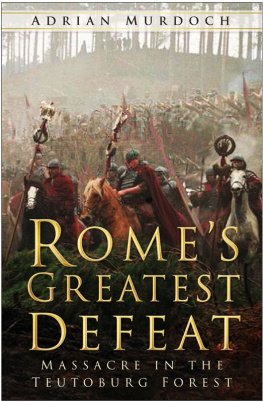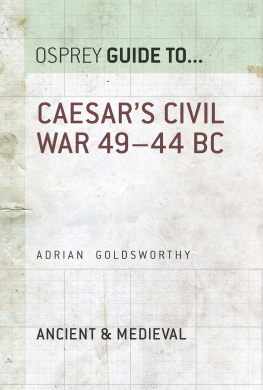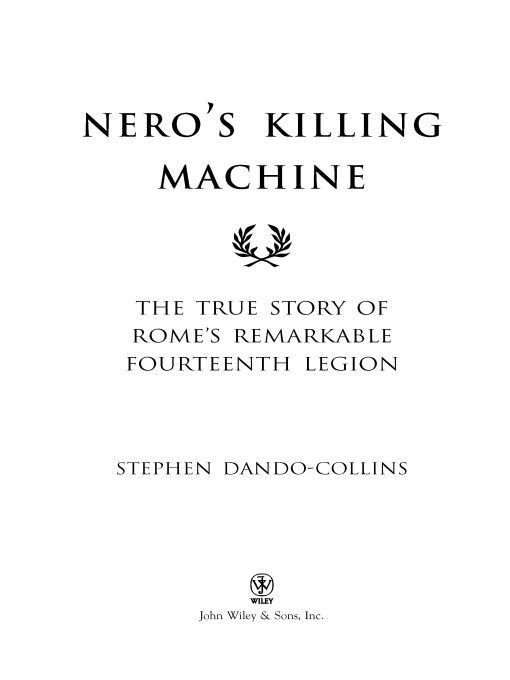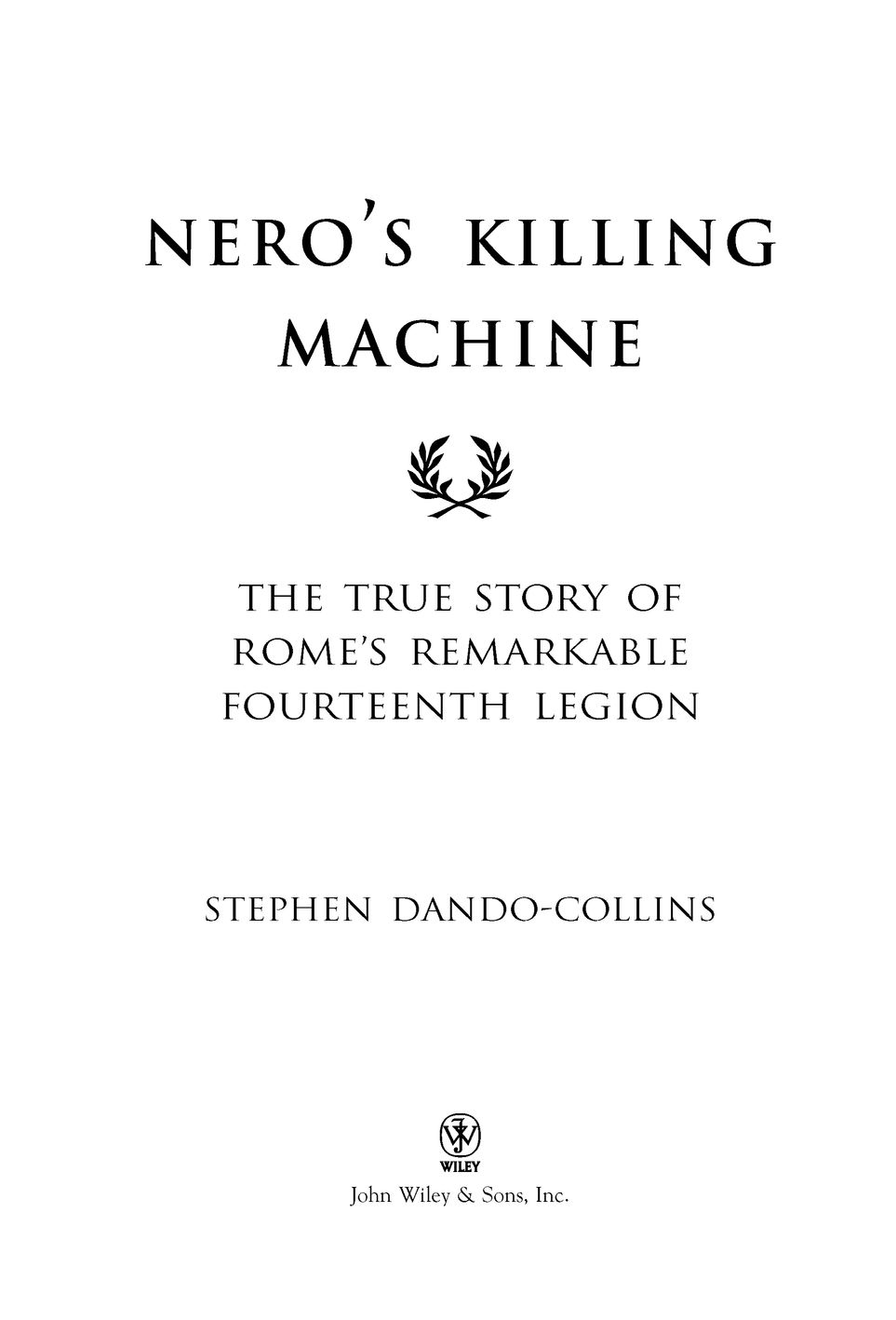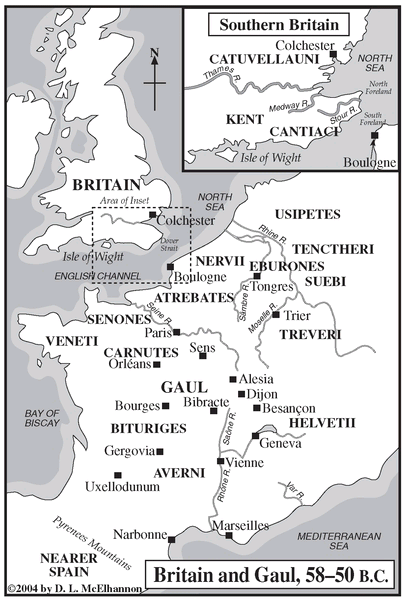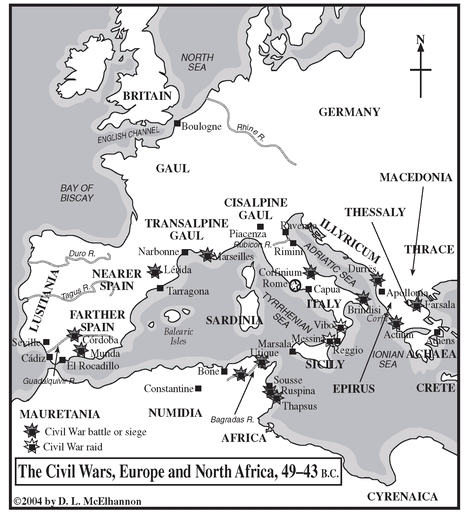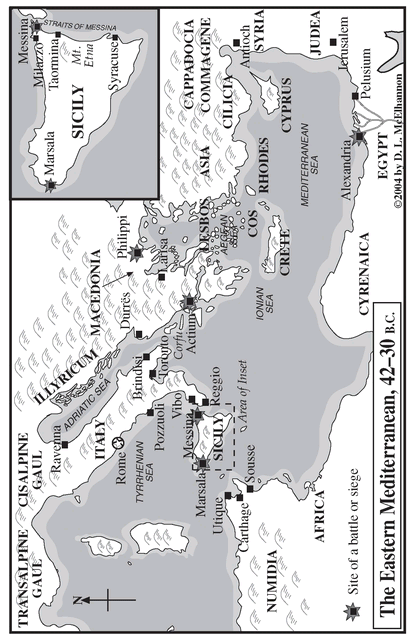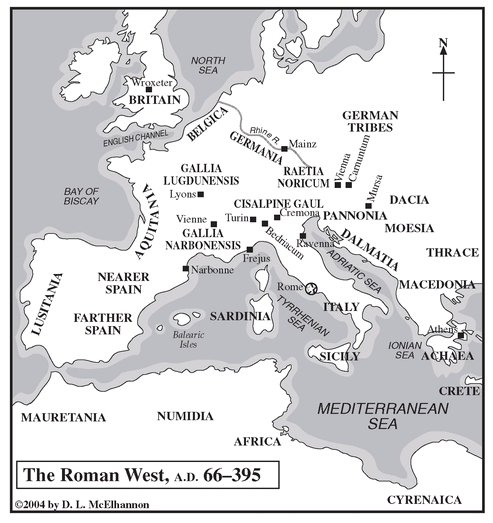Table of Contents
ATLAS
1. Britain and Gaul, 58-50 B.C.
2. The Civil Wars, Europe and North Africa, 49-43 B.C.
3. The Eastern Mediterranean, 42-30 B.C.
4. Britain, Gaul, and Germany, 25 B.C.-A.D. 71
5. The Roman West, A.D. 66-395
ACKNOWLEDGMENTS
This book would not have been possible without the immense help provided over many years by countless staff at libraries, museums, and historic sites throughout the world. To them all, my heartfelt thanks. Neither they nor I knew at the time what my labor of love would develop into. My thanks, too, to those who have read my research material as it blossomed into manuscript form and made invaluable suggestions.
I wish to record my gratitude to several people in particular. First, to T. R. Fehrenbach, for his support of this project when it was taking shape and for his generous words about the first book in the series. Thanks, too, to Stephen S. Power, senior editor with John Wiley & Sons, for his continued enthusiasm, support, and guidance and senior production editor John Simko. Then there is the wise one, Richard Curtis, my champion of a New York literary agent, who has gone into battle for me time and again.
And my remarkable wife, Louise, my muse, my shield, my countess. We are now into our third decade together, and never once in all this time has her faith in me, my writing, or my aspirations slipped. She has guided, goaded, and guarded me all through this time, and never let me lose sight of the goal. As Seneca said of his wife, Paulina, Can anything be sweeter than to find that you are so dear to your wife that this makes you dearer to yourself?
AUTHORS NOTE
This is the second book in this series of histories of legions of ancient Rome, the result of thirty-two years of research and writing. Prior to the 2002 publication of the first book in the series, Caesars Legion, the story of the 10th Legion, never before had a comprehensive history of an individual Roman legion been published. In the process of those decades of detective work it was possible to identify the Augustan and post-Augustan legions raised between 84 B.C. and A.D. 231 and to compile detailed histories of many of them.
The works of numerous classical writers who documented the wars, campaigns, battles, skirmishes, and most importantly the men of the legions of Rome have come down to us. Authors such as Julius Caesar, Appian, Plutarch, Tacitus, Suetonius, Polybius, Cassius Dio, Josephus, Cicero, Pliny the Younger, Seneca, Livy, Arrian. Without their labors this book would not have been possible.
During the research for this series, light was shed for the first time on a number of issues relating to the legions, the most important of which was the reenlistment factor. The legions of Rome were recruited en masse, and the survivors discharged en masse at the end of their enlistmentoriginally after sixteen years, later, after twenty. Only on exceptional occasions, such as one described in this book, were replacements supplied to a legion before its new enlistment was due, to make up for battle casualties. By using the reenlistment factor it was possible to determine the exact years in which every legion and the Praetorian Guard underwent their discharges and reenlistments. This helps explain why particular units were crushed in this battle or that. In some, they were raw recruits; in others, they were weary men about to go into retirement after twenty years in uniform.
All speeches and conversations in this book are taken from dialogue and narrative in classical texts, and are faithful to those original sources. The exchanges at the officers conference at Atuatuca in 54 B.C., for example, are as Caesar recorded them in his memoirs. Likewise, the prebattle speeches of Boudicca, General Paulinus, Civilis, and General Cerialis are just as Roman historians Tacitus and Dio wrote them.
For the sake of continuity, the Roman calendarwhich in Republican times varied by some two months from our ownis used throughout this work. Place names are generally first referred to in their original form and thereafter by modern name, where known, to permit readers to readily identify locations involved. Personal names familiar to modern readers have been used instead of those technically correctMark Antony instead of Marcus Antonius, Julius Caesar for Gaius Caesar, Octavian for Caesar Octavianus, Caligula for Gaius, Pilate for Pilatus, Vespasian for Vespasianus, etc.
In the nineteenth and twentieth centuries it was fashionable for some authors to refer to legions as regiments, cohorts as battalions, maniples as companies, centurions as captains, tribunes as colonels, and legates as generals. In this work, Roman military terms such as legion, cohort, maniple, and centurion have been retained, as its felt they will be familiar to most readers and convey more of a flavor of the time. Because of a lack of popular familiarity with the term legate, general and/or brigadier general are used here. Colonel and tribune are both used, to give a sense of relative status. Likewise, so that readers can relate in comparison to todays military, when referred to in the military sense praetors are given as major generals and consuls as lieutenant generals. In this way, reference to a lieutenant general, for example, will immediately tell the reader that the figure concerned was a consul. I am aware this is akin to having a foot in two camps and may not please purists, but my aim is to make these books broadly accessible.
Enough material exists, from sources classical and moderndetailed in the appendices of this workto write a number of books on the more interesting of Romes legions, and while growing armies of readers around the world, many of them new to Roman history, continue to enjoy these insights into the way the men of the legions lived and died, I shall continue to put together the legions stories.
This is the story of the men of the 14th Legion, later called the 14th Gemina Martia Victrix Legion. For more than a century its legionaries bore the shame of a terrible baptism of fire, until the legion became Neros killing machine and earned itself fame for a deed that would never be surpassed. These are the men who made Rome great. One or two extraordinary men, and many more ordinary men who often did extraordinary things. I hope that via these pages, you come to know them.





